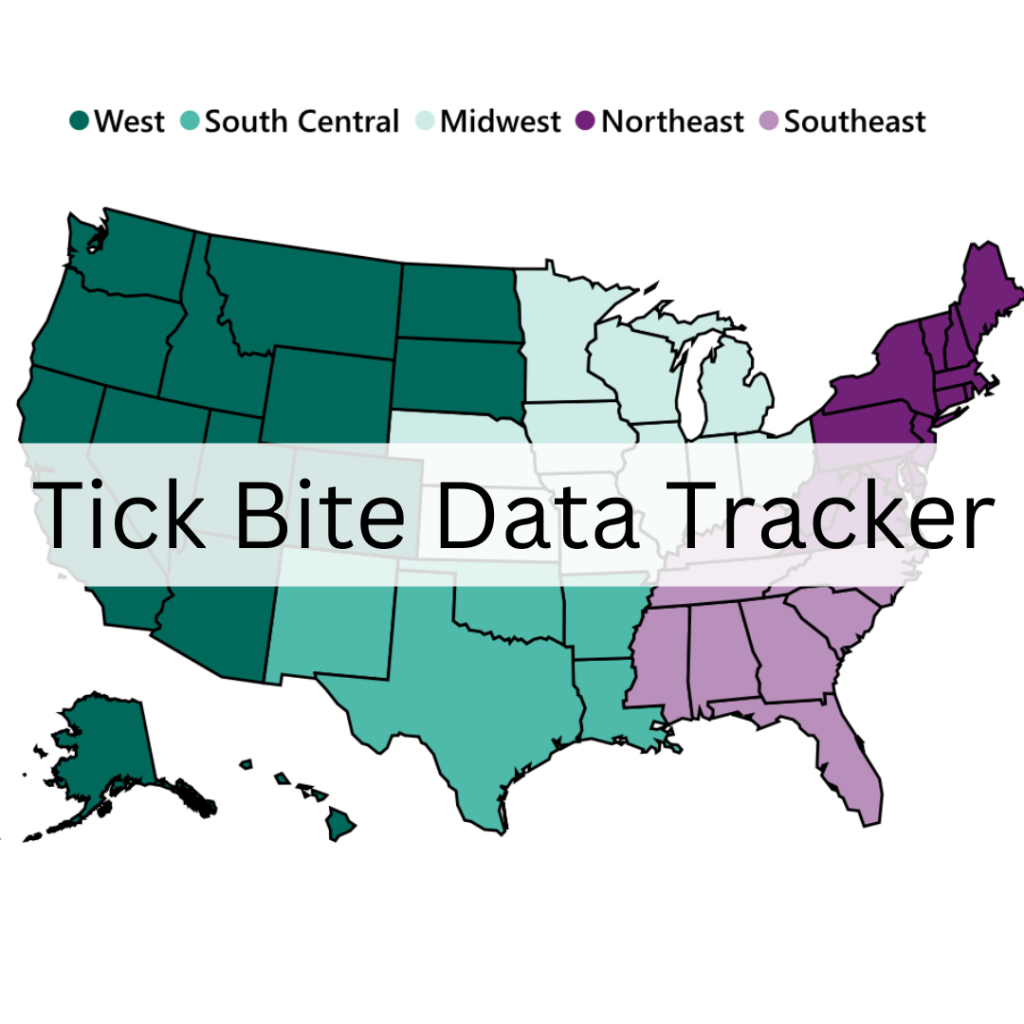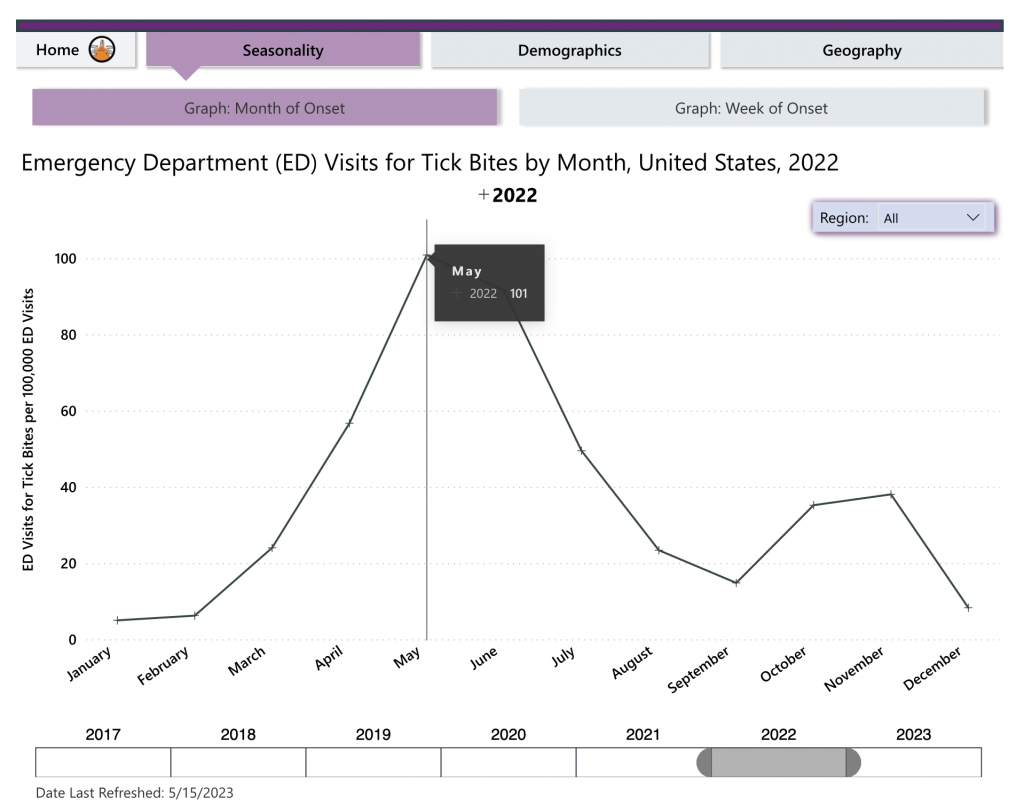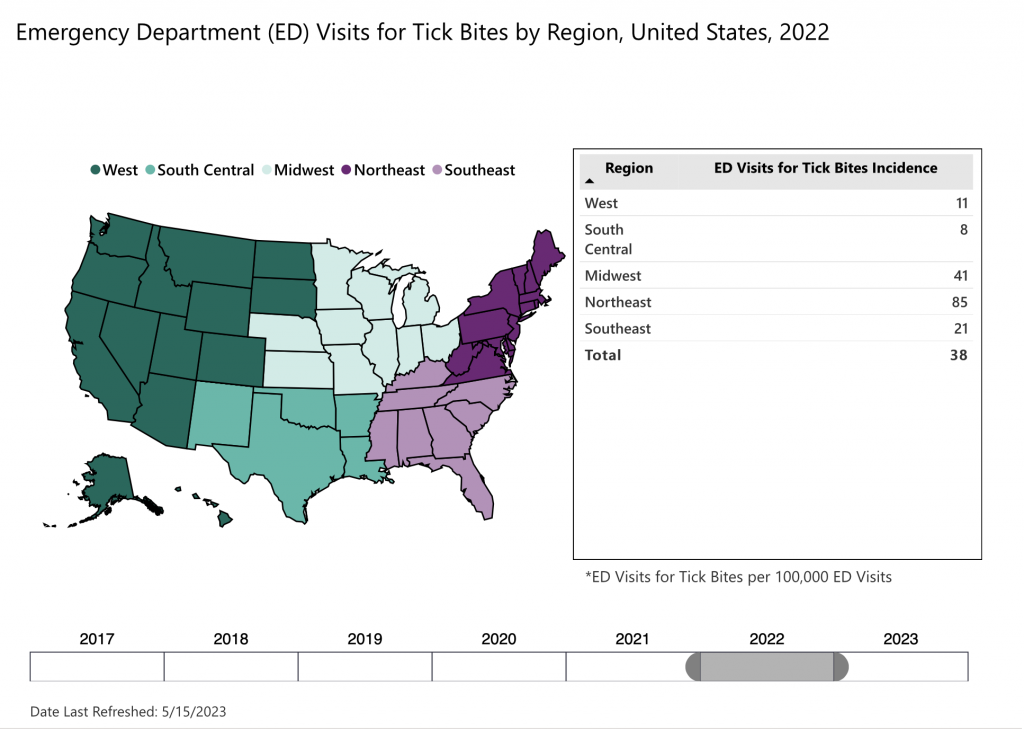CDC’s new online tool gives useful, if slightly flawed, information

The CDC has recently updated its website regarding ticks and their diseases.
The changes include a new online tool called the Tick Bite Data Tracker. It allows users to track and visualize tick-borne disease data in the United States, advancing our ability to raise awareness.
The new tool provides information on diseases transmitted by ticks such as Lyme disease, anaplasmosis, Rocky Mountain spotted fever, and ehrlichiosis.
The CDC webpage also gives information on the most common North American types of ticks and 16 known diseases transmitted by ticks such as babesiosis, Borrelia miyamotoi, Powassan virus, STARI, Colorado tick fever and more.
In addition, the CDC offers an updated page on Alpha-gal syndrome, an allergy to red meat and products derived from mammals. The condition is triggered by the bite of a tick.
National collaboration
The Tick Bite Data Tracker is part of the National Syndromic Surveillance Program (NSSP) which is a collaboration among the CDC, local health agencies, state health departments and private sector partners. The NSSP allows these partners to collect, share and analyze electronic healthcare data in near real-time as it is processed.
Because there is no medical diagnostic ICD code for “tick bite,” the emergency department visits for tick bites are identified by specific words used in the medical record. For example, “tick” or “tick” and “bite.”
The Tick Bite Data Tracker includes interactive maps, graphs and tables that allow users to explore the data in different ways. Users can view data on a national or state level, as well as by county or even zip code in some areas.
One of the most interesting aspects of this new site is the ability to track emergency department visits for tick bites by week and month. This eliminates the strict reporting criteria that adversely affects statistics in lower incidence states like Florida, Texas and California.
What we see on the Tick Bite Data Tracker is simply the number of persons per 100,000 with reported tick bites who sought care in an emergency room. The new data can indicate when tick bites are most common in a region, and unlike other CDC surveillance data, it is updated weekly, rather than annually.
Tick bites peak in Spring
You can clearly see in the graph below how tick bites peak in the spring in almost all regions of the United States.
Unfortunately, the CDC lumps every state west of Nebraska as the “West.” Therefore, areas with higher incidence of tick bites, like California, are averaged with areas of lower incidence like Wyoming—giving an inaccurate picture.
In my opinion, at the very least, the CDC should have divided this huge region into the southwest and northwest to offer better representation of what is happening in those zones—but that’s another topic.
The site also points out several limitations of the tracker tool: “Results might not be generalizable to emergency departments that are not contributing data to the BioSense Platform. The keywords used to identify tick bite visits may under- or overestimate emergency department visits related to tick bites because of differences in coding, reporting, and availability of chief complaint text data between jurisdictions or over time. Finally, aggregated data by region might be less useful than state or local data.”
So essentially, you have to take this data for what it is: a slightly flawed tool that gives us a glimpse into what is happening in the tick-borne disease world.
Lyme Awareness Month is an opportunity to educate the public about the risks of Lyme disease and promote strategies for prevention and early detection. I hope you’ll use the Tick Bite Data Tracker, as well as additional information spread throughout the pages of our website to spread awareness.
LymeSci is written by Lonnie Marcum, a Licensed Physical Therapist and mother of a daughter with Lyme. She served two terms on a subcommittee of the federal Tick-Borne Disease Working Group. Follow her on Twitter: @LonnieRhea Email her at: lmarcum@lymedisease.org.






















We invite you to comment on our Facebook page.
Visit LymeDisease.org Facebook Page